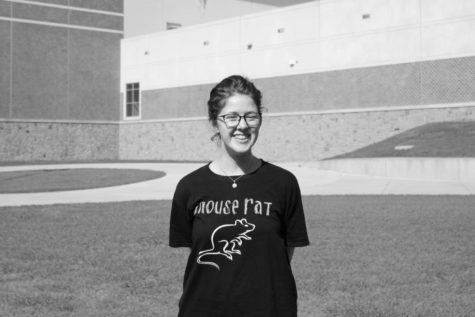Vandegrift takes the PSAT
October 22, 2016
Every year, every student in every school in America does the same thing. One hundred and eighty million dollars worth of scholarships are awarded to the students that do the best, so the stakes are high. Every year, the students take the PSAT/NMSQT.
The PSAT is a preparation tool for high school students all around the country. Not only do their scores determine if they become a National Merit Scholar, it prepares students from ninth to eleventh grade for the SAT.
“I think that taking the PSAT for three years is beneficial,” junior Nidhi Vedire said. “Because then you know what to expect for when it matters.”
All students are given optional PSAT practice before the test. Because freshmen students have never seen this test before, this is especially helpful.
“To prepare for the PSAT, I used the practice tests that were given by english teacher,” freshman James Collyer said. “And I reviewed some of the questions that I needed.”
For freshman, this is one of the longest standardized test they have ever taken, and it is different from the other ones they have taken so far.
“They have never seen this type of test,” Rachel Hoyle, English I and English II Pre-AP teacher, said. “For example, they’ve only been used to STAAR testing, so it’s very different in terms of doing separate sections and having to go ahead versus one big section they can look back on. And they have to sit still for four hours, it is a long exam as well, longer than some STAAR tests.”
Teachers proctor the PSAT, and require training because it is a state and nation-wide exam.
“We were trained during a half day on campus, and we are have to sit through an hour of training of proctoring, as in what the state wants versus what the national side wants as well, because PSAT is not just the state of Texas, it is a national organization,” Hoyle said. “We are required to go through a powerpoint and make sure we know how to use the powerpoint as well as which timers to properly use, and also go over how many kids will be in our room.”
The PSAT is also the NMSQT, which stands for the National Merit Scholarship Qualifying Test. Students, especially juniors, recognize that portion of the test just as much as the preparation part.
“I think the purpose of the PSAT is to get an idea of what you’ve learned,” Vedire said. “And so you can get National Merit Scholarships.”
The PSAT team works to receive National Merit Scholarships for the one hundred highest scoring tenth graders. They work from summer bootcamps to in school meetings three times a week.
“The PSAT team are high scoring tenth graders in a quest for national merit status for their junior year score,” dean of registration Christa Martin said. “We had 63 students this year that were honored by the National Merit Corporation.”
Other than the National Merit side of the exam, the preparation could be more valuable than the student anticipate.
“I think it is a great practice tool for everyone. It is a free test, it is typically around $120,” Hoyle said. “It also gives you feedback about where your strengths and weaknesses are for the SAT without actually having to pay for the SAT and without having your scores released to all of the universities that you potentially would like to attend.”
Students all over the country take this exam, 3.14 million sophomores and juniors took the exam in 2013. They get the opportunity to prepare for the SAT for free, and see what the exam is like for college readiness. But even if they don’t enjoy testing, some students find other ways to enjoy the four hour test.
“I kind of enjoyed taking it,” Vedire said. “But I was just waiting until afterwards so I could look at the funny tweets about it.”






